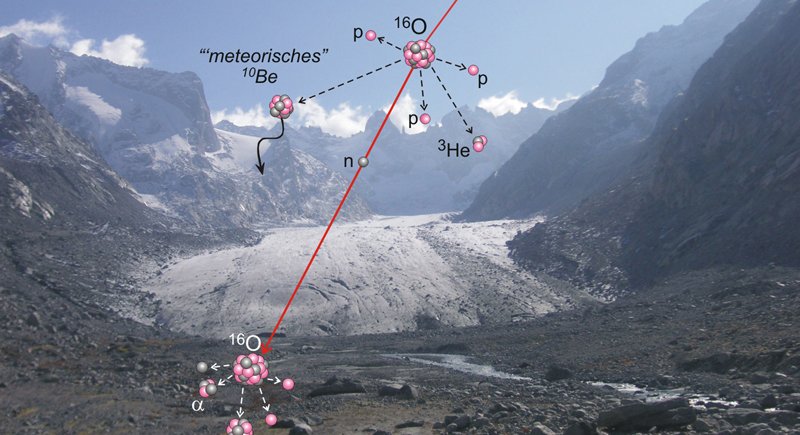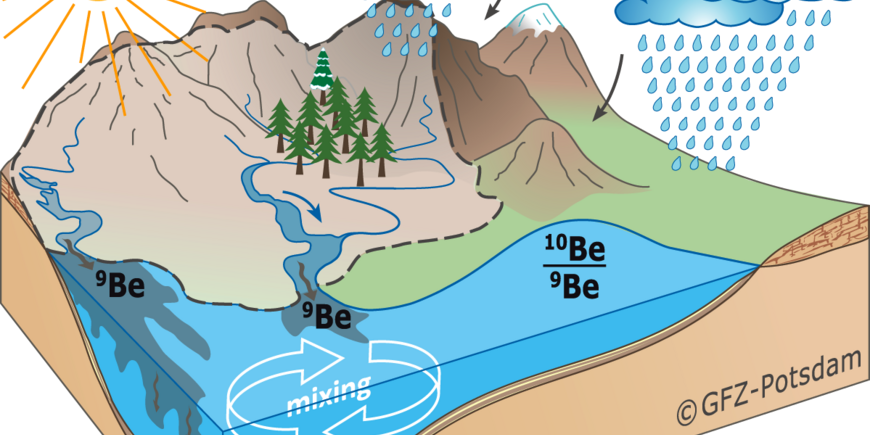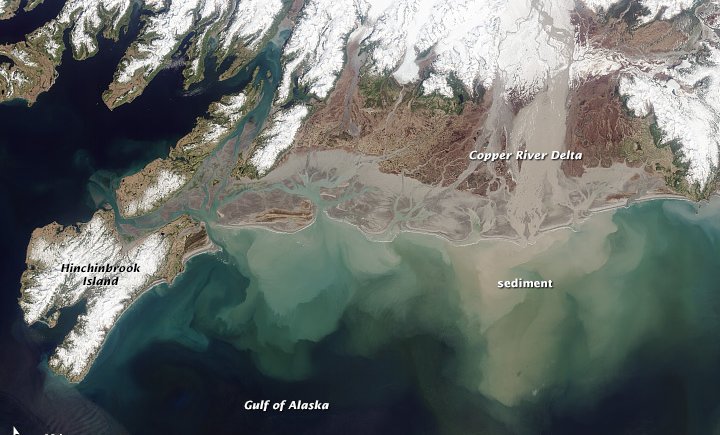Surprisingly stable behavior despite glacial and interglacial periods
08.06.2015: That weathering has to do with the weather is obvious in itself. All the more astonishing, therefore, are the research results of a group of scientists from the GFZ German Research Center for Geosciences in Potsdam and Stanford University, USA, which show that variations in the weathering of rocks over the past 2 million years have been relatively uniform despite the distinct glacial and interglacial periods and the associated fluctuations in the Earth’s climate. The researchers have observed a most stable behavior in marine sediments, fed year after year through the rivers of the world with silicate rocks, the product of weathering - variations in the weathering rates were actually less than ten percent.
The surface of the Earth is under constant change: chemical reactions between water and rocks dissolve minerals, form soil and wash removed component parts in the form of sediments into the oceans. Hereby, carbon dioxide is extracted from the atmosphere and deposited in the oceans rendering global temperatures favourable for human life.
Scientists actually expect high fluctuation in weathering rates during the cold and warm periods. If scientists measure the transport of weathered rocks in the rivers worldwide today, they find slower rates in the drier and colder regions. During the glacial period, temperatures and rainfall were lower and vegetation cover was reduced in many regions of the world i.e. weathering rates are reduced during the glacial periods. On the contrary, increased weathering reactions due to increased rainfall, highter temperatures, more vegetation and melting glacial ice are expected during the warm periods. “If you look at how these climate attributes control weathering rates today, you would expect that weathering and sedimentation rates also varied widely between glacial to interglacial times,” explains the Geochemist Friedhelm von Blanckenburg of the GFZ German Research Centreor Geosciences, author of the study. “But what we found was the complete absence of resolvable variations though the last two million years”.
Together with his GFZ colleague, Julien Bouchez, a research scientist now at the Global Institue of Physics in Paris, they applied a geochemical technique, which has been playing a central role in determing the rate of Earth surface processes at the GFZ during the past few years. One compares the concentration of two forms, or isotopes, of the element Beryllium (Be). 9Be is found naturally in silicate rocks on Earth; 10Be is a radioactive cosmogenic isotope produced by the collision of cosmic rays with nitrogen and oxygen molecules in the atmosphere. “Because 10Be rains down onto the Earth’s continents and oceans at more or less a constant rate, it is like a clock that can be used to time processes,” von Blanckenburg said. “9Be, on the other hand, can be used to calculate how much dissolved rock has been washed into the oceans from rivers.”
By determining the ratio of 10Be to 9Be in marine sediment layers, it was possible to reconstruct the weathering flux for the last two million years with the surprising result that there was little change between glacial and interglacial periods.
And now, scientists Kate Maher and Daniel Ibarra from Stanford University (USA), who specialize in using computer models to understand how the flow of water controls weathering, have compiled data on river-to-ocean flow from an ensemble of climate models and have calculated the average discharge from rivers at different latitudes during glacial and interglacial times. The Stanford scientists reached the same results. Because the global water discharge is strongly controlled by the large tropical rivers, whose water volume hardly varied between the glacial and interglacial periods, the global rock weathering showed only moderate fluctuation.
In spite of this explanation questions still remain open: why did the melting of glaciers and the release of large amounts of finely ground rock at the end of the glacial period have no influence on weathering and why can the effect of globally varying vegetation not be observed.
Friedhelm von Blanckenburg, Julien Bouchez, Daniel E. Ibarra, Kate Maher: „Stable runoff and weathering fluxes into the oceans over Quaternary climate cycles”, Nature Geoscience, Advance online Publication, 08.06.2015, DOI: 10.1038/ngeo2452
Pictures in a printable resolution may be found here:
Fig. 2: The global Beryllium cycle
https://media.gfz-potsdam.de/gfz/wv/05_Medien_Kommunikation/Bildarchiv/Gebirgserosion/Be-Cycle-press_fvb2015.png
Fig. 3: Satellite view of the Copper-River-Delta with sedimentload
http://visibleearth.nasa.gov/view.php?id=81784
Fig. 4: Sedimentload in the Ganges-Delta seen from 11 000 m altitude
https://media.gfz-potsdam.de/gfz/wv/05_Medien_Kommunikation/Bildarchiv/_Einzelbilder_PM/20150429_SedimentGanges.jpg











![[Translate to English:] Torsten Sachs in front of a climate station on a field](/fileadmin/_processed_/3/9/csm__TorstenSachs_bearbeitet_GS_4a1365ef84.jpeg)

![[Translate to English:] left image flood at the Ahrtal: image from above, several houses are flooded; left image:: Heidi Kreibich;](/fileadmin/_processed_/4/4/csm_Bild2_9af0130e9f.png)



![[Translate to English:] Start der Vega Rakete](/fileadmin/_processed_/6/4/csm_20231201-kachel_Vega-VV23-launch_ESA-CNES-Arianespace_706716b68c.jpeg)









![[Translate to English:] Poster exhibition at the Brandenburg Hydrogen Day at the GFZ, some participants in the foreground](/fileadmin/_processed_/6/5/csm_Erster_Brandenburgischer_Wasserstofftag_GFZ_402fcec95e.jpeg)
![[Translate to English:] Group picture of the participants](/fileadmin/_processed_/9/4/csm_20231108_CAWa-Workshop-Tashkent_Gruppenbild_99ea779d8a.jpeg)

![[Translate to English:] [Translate to English:] Hörsaal](/fileadmin/_processed_/e/6/csm_H%C3%B6rsal_e21ac645fb.jpeg)


![[Translate to English:] The Delegations in the Historic Library on the Telegrafenberg. In the back there are from left to right, the Dutch Ambassador for Germany, Ronald van Roeden, the Dutch Minister for Education, Culture and Science, Robbert Dijkgraaf and the scientific director of the GFZ, Susanne Buiter.](/fileadmin/_processed_/d/b/csm_Kachel-2_9eba4b4212.jpeg)

